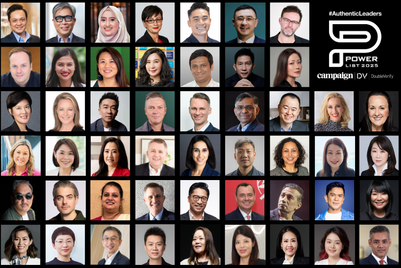
Marketers talk a lot about getting outside of their bubble and drawing inspiration from other arenas to get ahead in the game. But according to Ben Poole, APAC managing director of Reprise, there’s one clear example that doesn’t get looked at enough.
That would be the Olympics, and specifically, Poole told delegates at IMMAP’s Digicon conference in Manila, the UK cycling team’s rise from no cycling medals at the 2000 Games, to eight golds in both Beijing 2008 and London 2012.
The chief of UK cycling, Dave Brailsford, made global headlines for his theory of “marginal gains”, and Poole said this can easily be applied to the digital marketing industry, especially in the realm of experience.
“It’s built on the Japanese idea of kaizen—continuous improvement, and should be applied to digital experiences,” Poole said. “It’s not being applied anywhere near enough in the industry.”

Experience is the buzzword of the moment, and Poole said it’s no surprise that the most-loved brands right now—Google, Amazon, YouTube, Facebook & Instagram—are so far ahead because they create winning experiences by continuously improving their offerings.
Consequently, they are creating new behaviours across all touchpoints, from purchase decision-making to the path to purchase through shoppable ads.
“There’s a mounting body of evidence in our industry that shows that companies focused on customer experience have greater customer satisfaction and higher business growth,” Poole said.
It’s not easy to become as successful as these companies—resources can be an issue—but Poole said by looking for the marginal gains in a brand’s digital strategy, there can be a host of both quick and more difficult fixes, that can have big effects on customer experience.
“Marginal gains is about doing 100 things 1% better,” he said. “[For your brand] it might be 50 things, it might be 150, but you have to identify them. Don’t be scared of it, divide and conquer, break the problems down and have scrum teams tackle each issue.”

It could be anything from product info, bid optimisation, analytics, site navigation or a host of other components that make up the digital consumer experience. A regular example that comes up with clients, Poole told delegates, is mobile site speed.
“It’s still the biggest and most common issue, and it’s really easy to fix, just by things like resizing your image files.” With that small adjustment, the brand has made a quick marginal gain and is already ahead.
Working cooperatively is critical to this methodology, as is prioritising the fixes that address the most severe digital consumer experience problems, because “winning experiences are 100% consumer first”.
It’s a daunting prospect for some brands, and Poole admitted that the right structure needs to be in place to succeed, just as it needed to be for the UK cycling Olympians.
“You need agility, so make sure you’re set up for it. If your organisational structure is too rigid, this might not be for you.”


.jpg&h=334&w=500&q=100&v=20250320&c=1)



.png&h=334&w=500&q=100&v=20250320&c=1)

.png&h=334&w=500&q=100&v=20250320&c=1)

.png&h=334&w=500&q=100&v=20250320&c=1)





.jpg&h=268&w=401&q=100&v=20250320&c=1)
.png&h=268&w=401&q=100&v=20250320&c=1)

